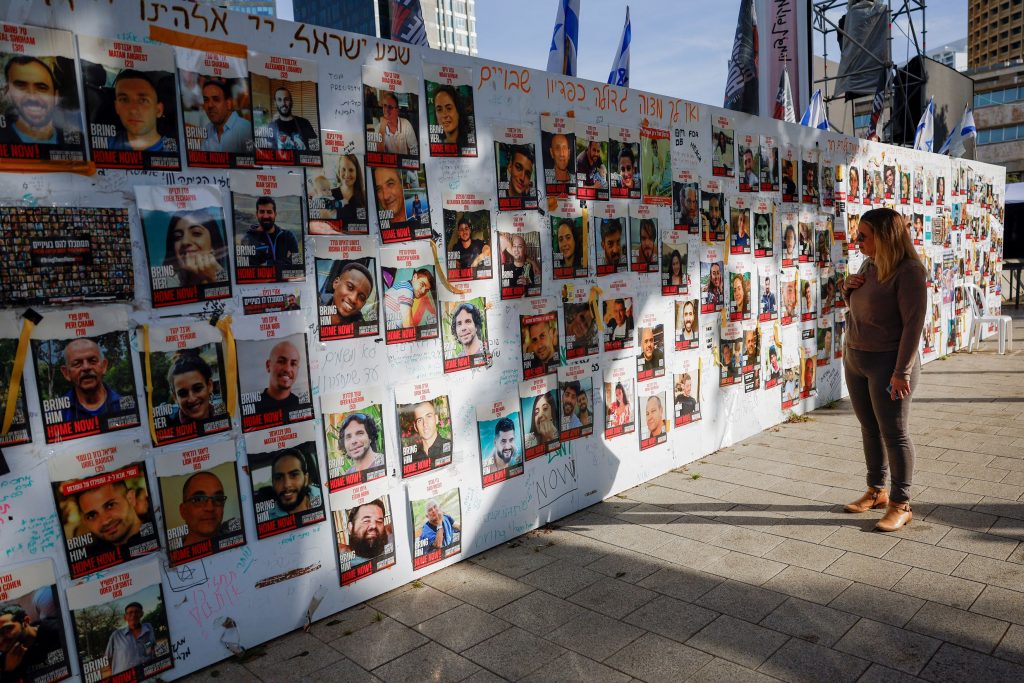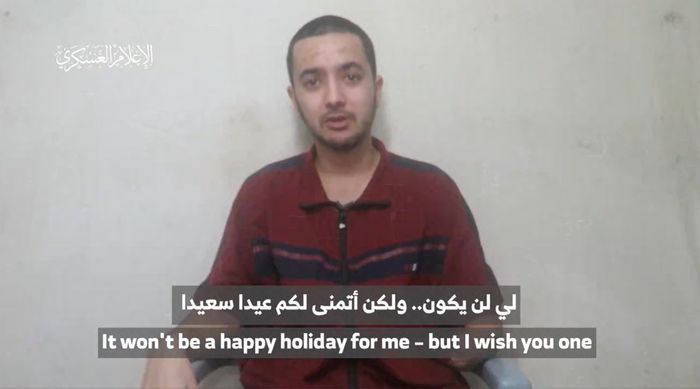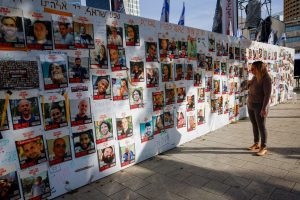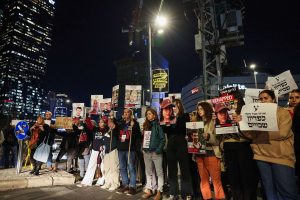Hamas released a video of an American-Israeli hostage on Wednesday, increasing pressure on the Israeli government to strike a deal with the militant group and raising hope the 23-year-old is alive after six months in captivity despite grave injuries.
The Israeli government urged Israelis not to watch the video, which it described as “psychological terrorism.” But in a rare move, the family of the hostage gave permission for the video to be published and used after it was released by Hamas, underscoring the plight of relatives who are lobbying for a deal after more than six months of war .
In the two-minute video, Hersh Goldberg-Polin speaks directly to Israeli Prime Minister Benjamin Netanyahu , urging him to bring him and the other hostages home. Seated in a chair in front of a white wall, Goldberg-Polin appeared agitated as he accused the government of abandoning them. The video wasn’t dated, but Goldberg-Polin said he had been held for nearly 200 days, suggesting it was filmed recently. He appeared with the stump of one arm, which was blown off when he was taken hostage by Hamas on Oct. 7 along with more than 240 others.

A view of a banner depicting Hersh Goldberg-Polin, an Israeli-American seized during the October 7 attack on Israel and taken hostage into Gaza, as today marks 200 days since people were taken hostages by the Palestinian Islamist group Hamas, amid the ongoing conflict between Israel and Hamas, in Tel Aviv, Israel, April 24, 2024. REUTERS/Shannon Stapleton
His mother, Rachel Goldberg-Polin , has become one of the most prominent voices calling for the hostages’ release in meetings with Pope Francis, President Biden and Elon Musk .
The release of the video comes amid weeks of deadlock in negotiations toward a deal to free some of the remaining 129 hostages , with both Israel and Hamas refusing to back down on key demands.
Goldberg-Polin’s parents appealed directly to Qatar, Egypt, the U.S. and Israel in response to their son’s video. “Seize this moment and get a deal done to reunite us with our loved ones and end the suffering in this region,” Jonathan Polin said in a video released after their son’s.
Protesters gathered outside the Israeli prime minister’s home in Jerusalem on Wednesday chanting, “Bring all of them back now!”
Little was known about Goldberg-Polin since Israel tracked his cellphone to Gaza after he was taken hostage during an all-night rave in southern Israel on Oct. 7. Witnesses told the family that Hamas had fired into the roadside bomb shelter where Goldberg-Polin was taking cover, blowing off one of his arms. Footage later emerged of him clambering into the back of a pickup truck clutching the mangled stump of his left arm.
“Hersh’s cry is the collective cry of all the hostages—their time is rapidly running out,” said the Hostages and Missing Families Forum, a group that campaigns on behalf of the relatives. “The hostages must be the top priority.”
Among the key obstacles to a deal are Hamas’s demand that any temporary cease-fire become permanent and Israel’s reluctance to allow the unrestricted return of displaced Palestinians to their homes in northern Gaza.
The U.S., Qatar, and Egypt have been mediating in the indirect negotiations toward a possible agreement that would free Israeli hostages taken by Hamas on Oct. 7 in exchange for Palestinian prisoners and a cease-fire in the war in Gaza. But the talks remain stalled with no signs of progress.
“It’s not totally dead but it’s paused for now,” said one official familiar with the negotiations on Wednesday. “We see no movement.”
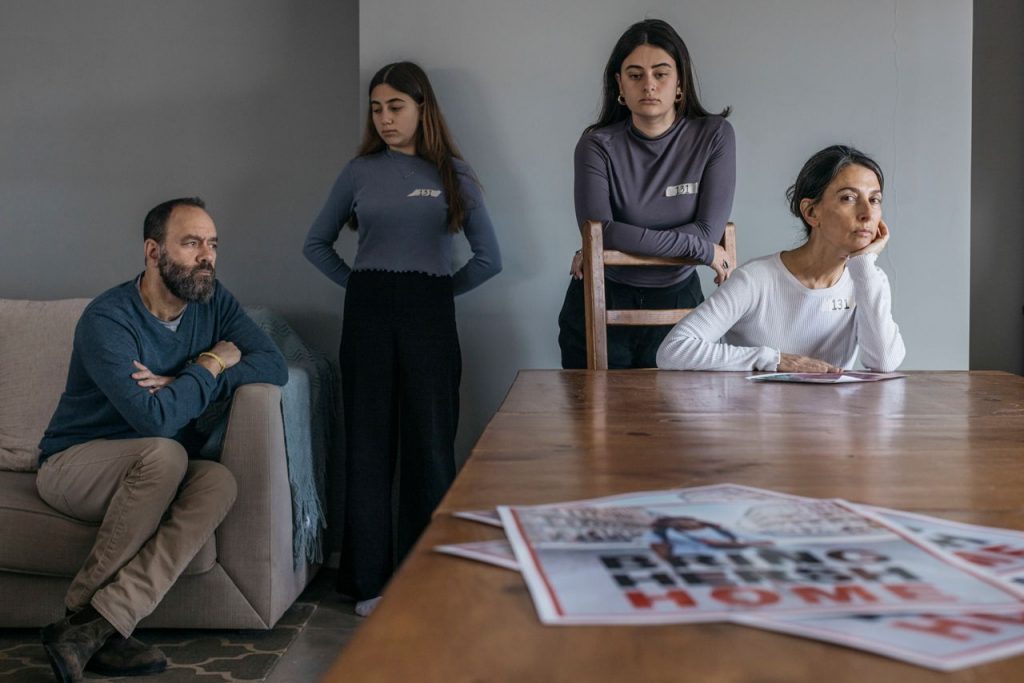
Hersh Goldberg-Polin’s family, from left: his father, Jonathan Polin, sisters Orly and Leebie, and his mother, Rachel Goldberg-Polin, in their house in Jerusalem. PHOTO: AVISHAG SHAAR-YASHUV FOR THE WALL STREET JOURNAL
Hamas released the video as Israel makes plans for a major offensive against the border city, Rafah, where the militant group’s leaders are believed to be holed up with hostages. Israel says only military pressure will force Hamas to release the hostages, but the offensive poses dangers to both the Israeli captives and the more than one million civilians who have taken shelter in Rafah.
Another problem arose in recent weeks after Hamas told negotiators it was unsure whether it could deliver 40 civilian prisoners to hand over as a part of the first phase of a hostage deal, heightening concerns among the families of the hostages.
A proposal for the deal backed by the U.S. envisions the militant group releasing civilians first, prior to freeing Israeli soldiers. Hamas is demanding the release of a higher number of Palestinian prisoners, including Palestinian political leaders and those serving long sentences on terrorism charges, in exchange for the potential release of soldiers.
Hamas had released 109 hostages as of the end of November when a cease-fire agreement that included hostage-prisoner exchanges expired. Of those, 105 were returned during the pause in fighting that began on Nov. 24.
Among the 129 remaining hostages, at least 34 are dead, including three Americans, according to Israeli government estimates. Five other American hostages, including Goldberg-Polin, are believed to be alive.
Write to Isabel Coles at isabel.coles@wsj.com
